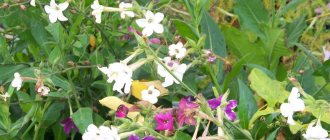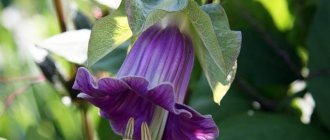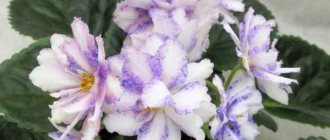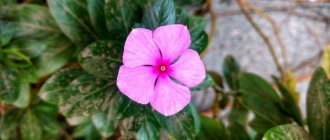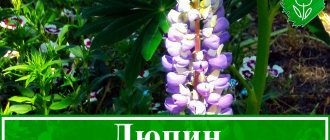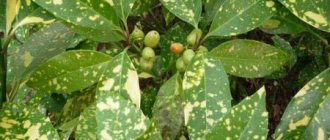Description of cotton
Cotton is a whole botanical series from the Malvaceae family, which includes about 50 species of plants, woody and herbaceous, annuals and perennials. Cotton plants, which serve as raw materials for the textile industry, are annual or biennial herbaceous plants.
Features of cultivated cotton:
- Root. Tap root system. The length of the root can reach 3 meters.
- Stem. Ramified. Reaches a height of 2 m.
- Leaves. Arranged alternately, fastened with petioles. They have a lobed shape - each leaf has from 3 to 5 lobes. Similar to maple.
- Flowers. Yellow, white or red, with 3-5 petals.
When the plant blooms, it is all covered with flowers. When flowering is completed, an unusual fruit appears in place of each flower - a round or oval-shaped box. Inside this “chest” the cotton seeds ripen.
When the seeds ripen, the capsule bursts and, opening, reveals a white fibrous mass in which the seeds of the plant are hidden. This white mass is called cotton. It consists of short and long hairs. The first ones are fleecy, the second ones are fluffy.
Cotton plants are magnificent flowers
Everyone is familiar with the look of a ripe cotton boll before harvesting, but only the people who grow it know what the flowers of this plant look like. We invite you to look at the flowers of several varieties of cotton, which belongs to the Malvaceae family.
Story
People began to use the fruits of cotton many centuries ago. Archaeological excavations testify to this. The first people to use cotton were in India. Here, archaeologists found materials and tools with which cotton raw materials were processed.
Somewhat later, cotton began to be grown in Greece and the countries of the Middle East. China, Persia, Mexico, Peru - in all these countries cotton began to be cultivated several thousand years BC.
The British were the first in Europe to produce cotton fabrics. The first machines for processing cotton appeared here in the 1770s.
Statistics say that every earthling consumes 7 kg of cotton annually.
Thanks to the development of technology, cotton production has become cheaper and the range of fabrics has expanded. The range of cotton products includes dozens of fabrics - calico, pique, gauze, cambric, poplin and many others.
Cotton is very profitable
Cotton grows in southern regions with a warm but fairly dry climate. Contrary to popular belief, cotton cultivation is not limited to developing countries in Asia and Africa. An economically developed country like the United States ranks second in the world after China in cotton production and is the leading exporter of this raw material on the world market. The only difference is that in the countries of Asia and Africa, cotton is harvested by hand, while in the USA, Australia, Brazil and other developed countries, agricultural machinery is used to collect it.
What types and varieties are there?
For a long time, botanists were unable to classify numerous representatives of the Cotton genus. There are many species, and most of them are very variable under the influence of external factors. And most importantly, cotton plants are easily pollinated, resulting in hybrids.
Agriculture today uses the following types of cotton:
- Grassy. Annual plant. Distribution area: Central and Southeast Asia, Transcaucasia. The shortest and most persistent species. It endures advancement to the north better than others. Coarse and short cotton is obtained from the herbaceous cotton plant; it is also called woolly.
- Indo-Chinese. Tree-like perennial plant. The tallest species. Its height can reach 6 m. Unlike other species, it has red flowers, not yellow. But the color of the resulting cotton is yellow. Habitat: tropical regions.
- Peruvian. Produces the longest and highest quality fiber. At first it was a perennial plant, but after selection it became an annual plant. It is grown only in Egypt and on the southeast coast of the United States.
- Ordinary. Received the greatest distribution. It is grown wherever the climate allows. This is an annual plant with white flowers. The resulting fiber is of average quality.
Varieties that have become widespread in Central Asia are Tashkent-6, Andijon-35, Regar-34, Dashoguz-11 and others.
We also recommend watching a story about a breakthrough in the field of agricultural selection - obtaining a new type of cotton:
Growing Requirements
When growing cotton, its requirements for the following factors are taken into account:
- Sowing time. Cotton seeds should be sown as early as possible - no later than February. If you delay, the plant will bloom too late; the boxes will ripen only in late autumn.
- Temperature. All types of cultivated cotton are extremely thermophilic. Seed germination begins at a temperature of 10-12°C. The optimal temperature is 25-30°C. The plant dies at frosts of 1-2°C. Moreover, death can occur both in the spring - at the beginning of the growing season, and in the autumn.
- Moisture. Cotton plants tolerate drought well thanks to their developed root system. The plant grows without moisture, but there is no talk of high yields. Cotton plants need irrigation. If there is not enough moisture, the boxes fall to the ground.
- Light. The plant is light-loving.
- The soil. Prefers grey-earth, alkaline-marsh soils and saline soils.
- Nutrients. The plant is very demanding regarding fertilizers. To produce 30-35 quintals of raw material per hectare, cotton takes 46 kg of nitrogen, 18 kg of potassium and 16 kg of phosphorus from the soil.
The growing season of cotton grown in Central Asia is about 140 days. And the boxes themselves ripen on the plant for 50 days.
Cotton is growing even in Russia
And in our country it is possible to grow this southern crop. For several years now, successful experiments have been conducted in the Astrakhan region on growing cotton varieties adapted to our conditions.
Crop rotation
The best predecessor for cotton is alfalfa. This culture promotes the accumulation of humus, enriches the soil with nitrogen and other useful substances, and reduces the level of salts. Thanks to planting alfalfa, the drainage characteristics of the soil are improved, and air circulates more actively in its upper layer.
Nursery data shows that alfalfa can increase yields by 50%. Moreover, high yields persist for 2-3 years after planting alfalfa.
A multi-field system looks something like this. Of the 6-7 fields prepared for planting cotton, they are used for alfalfa. In addition to alfalfa, it is recommended to plant before cotton:
- corn for silage and green fodder;
- sugar beets;
- any legumes and grains.
Soil preparation
Preparing the soil for cotton comes down to the following activities:
- Peeling the soil after harvesting alfalfa. Completion date: end of August - beginning of September. The plow's recess is small - only 5-6 cm, if the soil is heavy - 10 cm. It is necessary to peel the soil to remove weeds and seeds.
- Plowing the plowed land. The plowshares of a two-tier plow are used to cultivate the soil 40 cm deep.
- Herbicides can be applied simultaneously with plowing. The technique in which the weed is burned along with the rhizome is used extremely rarely.
- Washing of saline soils. Saline soils must be loosened again using a cultivator or plow.
- Double-track harrowing. This event marks the beginning of spring work. In areas with a mild climate, harrowing begins in the second ten days of February.
- Application of manure. This is necessary for weak soils. After application - plowing.
- Cultivation to a depth of 5-8 cm is the final stage of soil preparation.
Cotton plants need a lot of nutrients. If it is grown for many years in one field, it is necessary to apply fertilizers:
- nitrogen – 140-160 kg/ha;
- phosphorus – 80-100 kg/ha;
- potash - 30-50 kg/ha.
If cotton is sown after alfalfa, then in the first 2 years less nitrogen fertilizers can be applied - only 50-70 kg/ha.
The following activities have a good effect:
- Parallel application of mineral and organic fertilizers.
- Stubble crops of “green fertilizers” - cotton yields after them increase by 6-7 c/ha.
- Granulated superphosphate or nitrophoska - 100 kg/ha.
Seed preparation
For sowing, only high-quality, conditioned seeds collected before the onset of frost are used. To obtain stable yields, only zoned cotton should be planted.
Seeds for planting are subjected to mechanical or chemical treatment. The down is mechanically removed - completely or partially. The chemical method involves etching with acid vapors - sulfuric or hydrochloric.
Other preparatory activities:
- Keeping seeds outdoors. Duration of exposure – 30-30 days.
- Seed disinfection. Fentiuram 65% or copper trichlorophenolate is used. Dosage – 12 kg per 1 ton.
- Before sowing, the seeds are immersed in water for 10 hours. Or you can simply moisten them by treating them three times every 10 hours. The water consumption rate is 500 liters per ton of seeds.
Landing rules
The minimum temperature for planting seeds is 10-12°C. Until the earth warms up, there is no point in sowing. Cotton seeds may die in cold soil. Seeds are sown in accordance with the selected planting scheme. But with any option, the row spacing is 60 cm. Schemes used for sowing cotton:
- Dotted method – 60x25 cm.
- Rectangular-nested – 60x45 cm.
- Square-nested – 60x60 cm.
- Wide-row crops – 90x15/20/30 cm.
The parameters of the sowing scheme affect the yield. The use of special methods can increase productivity. Thus, the use of the ridge method allows you to obtain an additional “increase” in the yield - 3 c/ha.
You need to place 2-3 seeds in one hole. They are buried by 4-5 cm. This is for ordinary gray soil, for swamp and meadow soil - 3-4 cm.
Seed consumption is determined by the chosen planting method. The selection is carried out so that there is no need to thin out the plantings. Seeding rates depend on seed treatment:
- Bare seeds – 40-42 kg/ha.
- Hairy seeds – 60 kg/ha.
The number of plants per 1 hectare is 80-120 thousand.
Cotton - denim flower
Popularly, cotton is often called the denim plant, since it is from it that everyone’s favorite denim fabric is made.
The advantages of such fabric are strength, wear resistance, comfort and breathability. The quality of denim directly depends on the cotton from which it is made.
Thus, Mexican cotton with fibers twenty-four millimeters long allows us to produce high-quality denim that has virtually no scars. Fabrics made from Barbados cotton are very soft and durable.
However, it is quite difficult to process and assemble it, so the number of jeans made from such fabric on the modern market is small - about seven percent.
Fabrics made from Zimbabwean cotton are of high quality at an inexpensive cost. The most popular in use is fabric made from Asian and Indian cotton with short staple fiber.
Such jeans occupy up to half of the modern clothing market.
Thus, denim fabrics are quite diverse both in composition, manufacturing method and appearance. It is this variety of choice that has made denim clothing so popular over the years.
Denim also has its own varieties, where cotton is the priority
It is unlikely that in the world you can find things more comfortable and practical than denim.
Plant care
When cotton is sown, you need to provide the crops with care:
- Irrigation. You can water the crops in any way, including sprinkling. In order for the roots to strengthen, it is necessary to water the planting twice. First, when 3-5 leaves appear, the second time - after 3 weeks, when budding begins. When plants flower and bear fruit, they require more moisture. The final watering is a week before the leaves fall off.
- Cultivation. During the growing season, three cultivations are carried out: when seedlings appear, the depth is 8-10 cm;
- before the first watering;
- when the soil dries out.
Diseases, pests and methods of protection
Pest and disease control measures:
- compliance with agricultural technology and farming culture;
- destruction of weeds;
- correct crop rotation;
- cleaning up plant residues after harvesting;
- deep autumn tillage – up to 30 cm;
- cultivation of disease-resistant varieties.
The most dangerous pests of cotton:
- spider mite;
- aphid;
- tobacco thrips;
- fall armyworm;
- bollworm
Sucking pests. The fight against aphids and tobacco thrips involves several treatments. The first - in March-April, the subsequent ones - depending on the density of insects per 1 sq. m. Nitrafen 65% (40-75 kg/ha) is used against ticks. Against the winter cutworm - chlorophos 80% (1.5-1.8 kg/ha). Against cotton bollworm – thiodan (2-2.5 kg/ha). The amount of spraying and poisons are selected individually, taking into account the type of insects and their number.
Cotton harvesting
Harvest in autumn. In September-October. Collection of cotton bolls - manual or automated. Cotton that contains seeds is raw cotton. The ripening of the bolls is uneven, which is why it is necessary to use different harvesting methods.
When most plants have at least two bolls on each branch, they begin to defoliate - remove foliage. This procedure prevents diseases and reproduction of pests nesting on the foliage.
How it grows: cultivated or wild
Let's consider whether this plant is cultivated or not . Cotton originated about one hundred million years ago in tropical forests. Here it grew as spreading cotton trees, and in semi-desert zones it evolved into dry-season resistant shrubs.
Later, the plant significantly expanded its habitat, “adjusting” to the climate of the area. In fact, it is both cultivated and wild. Grows in the following places:
| Africa | low-growing savanna species |
| Peruvian valleys | velvety cotton plant that produces green fibers |
| Australia | a species that is not afraid of frost, hot and dry weather, as well as diseases |
| America | low trees producing brown fiber |
How cotton is harvested in Africa
Cotton harvest in Peru
Cotton in Peru
Australian cotton
Cotton field USA
Cultivated cotton is grown all over the world, but is an extremely capricious plant. It requires a large amount of heat and moisture, and the seeds do not germinate at temperatures below fifteen degrees.
The best conditions for cotton growth are considered to be thirty-degree heat and abundant watering, especially during flowering.
Also, be sure to fertilize the soil before planting , and to increase the yield in summer, it is necessary to cut off the tops of the central stem and side branches. After the box bursts, the cleaning begins.
Since ripening does not occur simultaneously, the entire harvesting process takes place in several stages.
You can also grow annual cotton at home. The main conditions for good flower growth are plenty of sunlight, warmth and reliable protection from drafts. Timely watering and fertilizing also important for it
Today there are thirty-two wild and five cultivated varieties of cotton on the planet.
Application and processing
Before cotton can be used for the textile industry, the seeds must be removed.
Cotton seeds are processed into oil - it is used to produce margarine and canned food. The cake is used as pet food.
Special cotton gin plants are engaged in cleaning the fibers from seeds. Processing order:
- Cleaning from seeds.
- Cleaning from dust.
- Packing in bales.
- Sent to the spinning mill.
Despite centuries of experience in growing cotton, its cultivation still involves painstaking work. This plant requires special climatic conditions and a number of agrotechnical measures. Achieving good harvests will require a lot of effort and investment.
0
0
Copy link
Cotton is more than just a fabric
Most of us know that cotton is used to make cotton fabrics and cotton wool. In fact, its application is much wider. Cotton seeds, separated during cotton cleaning, are rich in vegetable fats. They make oil, which is widely used in cosmetology, and also produce cottonseed flour. Another waste product from cotton production is lint, which is used in the production of photographic paper and film, as well as plastics and some paints and varnishes. Husks and other waste from cotton production, rich in useful substances, are used to produce animal feed.
Cottonseed oil
